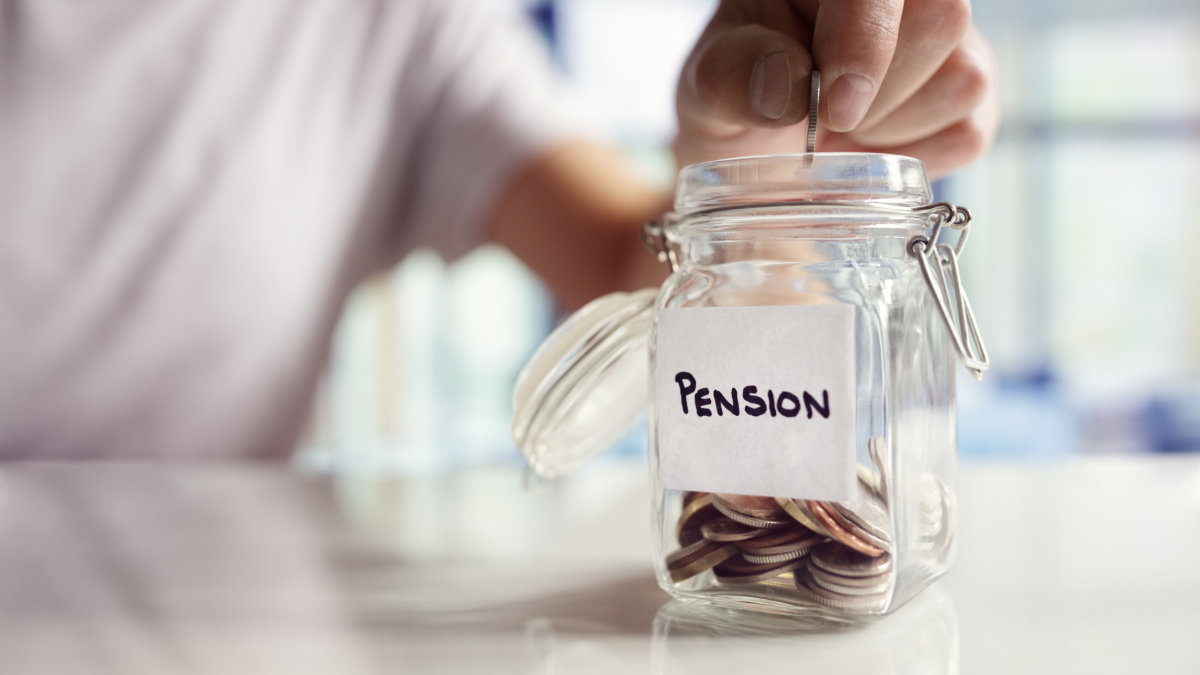Saving for your retirement is one of the smartest financial moves you can make. By paying in more money via a private pension top-up, you can increase the value of your pension fund at retirement – giving you more potential income in later life and helping ensure you enjoy the retirement you deserve. However, deciding the best way to add contributions to your pension pot and take advantage of government tax relief on personal pension savings can be a challenge.
Private pension top-up – what are the benefits?
Topping up your pension pot makes great financial sense – and can be a good way to boost your pension fund as you approach retirement. Potentially, the more you save, the greater the tax relief benefits you get. That’s because as a UK taxpayer you’re entitled to tax relief on private pension top-up contributions of up to £40,000 or 100% of your earnings if you earn less than £40,000.
Find out more about tax on your private pension contributions.
Depending on whether you’re a basic or higher rate taxpayer, the government will contribute 20% extra to your personal pension savings and even allow higher rate taxpayers to claim back an additional 20% in tax relief by completing a self-assessment form. The rules are slightly different for Scottish taxpayers, but the government will contribute 20% even if you live in Scotland and pay the starter tax rate of 19%.
Those pension savings tax relief benefits can quickly add up, and the earlier you start the more time your pension has to accumulate increased contributions through a private pension top-up and associated tax relief. It’s also worth looking at a pension fund as a long-term investment vehicle, which means that while pension fund values can fall as well as rise, the overall value of your pension fund should increase in value over decades.
How does tax relief work for personal pension contributions?
Whether you’re a higher rate taxpayer or a basic rate taxpayer, increasing contributions to your personal pension can result in the immediate bonus of tax relief.
Basic rate taxpayers – If you saved around £80 into a personal pension each month, the government would add an additional £20 into the pot, increasing the overall contribution to £100. Over 20 years this tax relief would be worth £4,800, which when added to the £19,200 of personal pension contributions you had saved would boost the value of all contributions to £24,000.
Higher rate taxpayers – As with a UK basic rate taxpayer, the government adds a 20% private pension top-up to the contributions you make. This means you benefit from the additional £20 tax relief contribution for every £80 you save. You can then claim an additional amount of higher-rate tax relief of 20% (this is 21% for Scotland) by submitting an annual self-assessment form. The effectively reduces your overall contribution to just £60 for every £100 added to your personal pension pot, or £59 if you’re a Scottish taxpayer.
Scottish taxpayers – If you live in Scotland it’s worth knowing that Scotland has an intermediate tax rate of 21% for earnings that fall between £12,151 and £31,580. That’s higher than England, Wales and Northern Ireland, and you should be able to claim back the additional 1% as tax relief when you complete your self-assessment form.
Bear in mind that the tax relief limit of £40,000 means you can only save £40,000 each year into your pension and be able to benefit from the tax relief detailed above. Any contributions you make over and above £40,000 into a private pension wouldn’t benefit from tax relief and instead, are added to your income and subject to tax and national insurance.
If you’re a very high earner with income in excess of £150,000 including pension contributions, pension tax relief is subject to a sliding scale, tapering down from £40,000 to just £10,000 if your income is £210,000 or more. It is possible to bring forward any unused tax relief from the previous three years – such as one year when earnings were significantly below £150,000 – but you have to have been in an active pension scheme for those three years. If you’re a very high taxpayer and subject to the 45% tax threshold it’s worth speaking to a financial advisor to make sure you get tailored advice.
Read our guide to pension drawdown – flexible retirement income, how it works and if it’s best for you.
Private pension top-up – how to increase contributions
You can start a private pension top-up whenever you want – and the earlier you start, the better. Simply contact your personal pension provider and arrange to increase your contributions. In most cases, you can simply start increasing the number of payments yourself.
Keep an eye on the tax relief threshold if you do increase contributions. For example, if you increase your contributions and your annual total is less than £40,000 then you should be able to claim the full amount of additional tax relief contributions you’re entitled to. If, however, your extra private pension top-up amount took you to a total annual contribution amount of £50,000, you wouldn’t benefit from tax relief on the additional £10,000 you contributed above £40,000.
Private pension top-up – what are the problems?
It is worth getting independent financial advice before increasing contributions, especially on what type of funds you should invest in.
For example, it’s best to avoid any private pension top-up that puts additional money into higher-growth and higher-risk investments, especially as you get closer to retirement. While the promise of high growth can be attractive when you’re looking to boost your personal pension pot, investments call fall significantly. If this happens close to your retirement age, you could be left with a large hole in your pension fund and not enough time for the market to recover in value.
It’s also worth remembering that all investments can rise and fall, and the contributions you make to a pension fund might not be worth the same when you look to cash it in and purchase an annuity. Good pension schemes will gradually move your money out of riskier investments as you approach retirement but as some pension funds invest in stocks and shares if the stock market falls so too could the value of your pension fund.
Using a lump sum as a private pension top-up
Typically, it is better to regularly add smaller contributions to a pension pot rather than stick in a lump sum all at once. This is because pensions are a long-term investment, and weekly or monthly rises and falls in stocks, shares and the value of your investment can make timing when to stick a lump sum into a private pension a tricky exercise.
Instead, dripping in smaller amounts over time delivers a smoothing effect – known as averaging – which means your pound buys more when share prices are low and less when prices are high. As share prices fluctuate significantly, investing a lump sum in can mean you buy when prices are high – getting less bang for your buck. Typically, investments and the stock market rise over the long term, so little and often private pension top-up contributions smooth up the peaks and troughs.
Is a private pension top-up worth it?
If you’ve come into a lump sum or had an increase in earnings, saving more into a pension makes sense thanks for tax relief. However, depending on your circumstances it might not be the best route.
Before increasing pension contributions, make sure you’ve paid off expensive debts first, such as credit card and high-interest loans. If cash reserves are low, it’s always worth holding onto some of your savings in a current account. ISAs are attractive in that income is tax-free and the money isn’t tied up in a pension fund, but you won’t get the attractive levels of tax relief that saving into a private pension provides.



























































